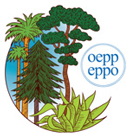
EPPO Jens-Georg Unger Plant Health Fellowship 2024
Testimony from a 2024 Fellow
Félix Morán- Instituto Valenciano de Investigaciones Agrarias

For my EPPO Jens-Georg Unger Plant Health 2024 Fellowship, I was hosted by ANSES in France within the National Reference Laboratories for Bacteriology and Virology for four months from February to May 2025. During my fellowship, I undertook a research project to evaluate and compare two high-throughput sequencing (HTS) technologies: Illumina, currently the gold standard, and Oxford Nanopore Technology (ONT), a third-generation, portable platform that delivers real-time sequencing data. In addition, I was able to evaluate three nucleic acid preparation protocols, two of which incorporated enrichment steps.
For this comparative study, two pathosystems were selected that pose a significant threat to plant health in the EPPO region: 1) begomoviruses and 2) `Candidatus Liberibacter spp.´, the bacterial agents associated with Huanglongbing (HLB) disease in citrus. The results for the bacterial pathosystem were limited due to the lack of fresh, high-quality genomic material suitable for HTS analysis; however, the begomovirus pathosystem yielded very promising outcomes.
For begomoviruses, we demonstrated that whole-genome viral assemblies generated using ONT sequencing from enriched DNA extract were highly comparable to those obtained with Illumina, with no significant errors observed in the comparison (>99% identity between de novo assemblies). Additionally, we helped develop and validate an enrichment protocol that significantly increased begomovirus-specific reads using ONT, enabling real-time HTS analysis. This enrichment protocol will be particularly valuable for rapid plant pathogen diagnostics. This also allowed us to establish a fast and reliable sequencing and bioinformatics pipeline for begomoviruses detection.
Initially, we tested the method on two model begomovirus species (Tomato leaf curl New Delhi virus (ToLCNDV) and Sweet potato leaf curl virus (SPLCV) including one betasatellites (Sweet potato leaf curl deltasatellite 1 (SPLCD1)). The results showed that the HTS method based on ONT technology with enrichment was highly effective. Encouraged by this, we expanded the study to include 18 additional begomovirus species, including EPPO A1 and A2 regulated pests, from the Agence nationale de sécurité sanitaire de l’alimentation, de l’environnement et du travail (ANSES) collection. We consistently recovered full genomes and detected unrevealed satellite sequences of potential pathological significance, thus proving the superiority of this protocol over the conventional PCR protocol proposed in the EPPO Diagnostic Standard PM 7/152 Begomoviruses.
Currently, both reference laboratories are assessing the analytical sensitivity, analytical specificity reproducibility, and repeatability of the HTS-ONT method while also developing a rapid bioinformatics pipeline for data analysis, aligned with EPPO’s PM 7/98 Specific requirements for laboratories preparing accreditation for a plant pest diagnostic activity and PM 7/151 Considerations for the use of high throughput sequencing in plant health diagnostics guidelines.
The results of this collaboration, supported by the EPPO Jens-Georg Unger Plant Health Fellowship, will soon allow us to publish one of the first validated rapid identification protocols for begomoviruses based on third-generation HTS. This will be helpful for plant diagnosticians.
Additionally, this work has strengthened the collaboration between the Bacteriology and Virology Departments of the Instituto Valenciano de Investigaciones Agrarias (IVIA) and the Bacteriology, and Virology unit of the Plant Health Laboratory at ANSES, with the prospect of future joint publications. The fellowship reinforced scientific ties between the National Reference Laboratories of Spain and France and opened avenues for further exploration of Nanopore technology in the detection of other non-culturable and intracellular plant pathogens, such as viruses, `Candidatus Liberibacter spp.´ and phytoplasmas.
